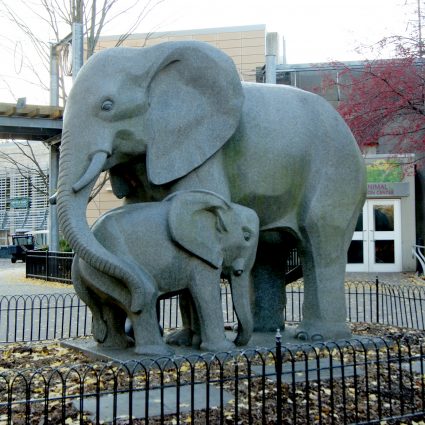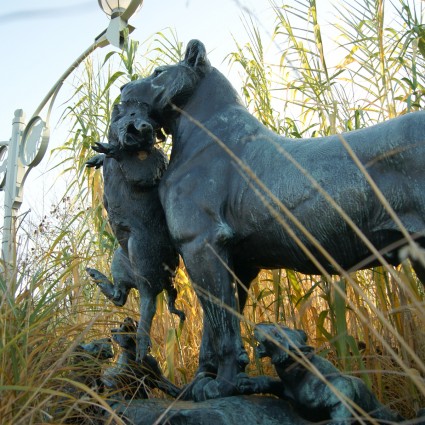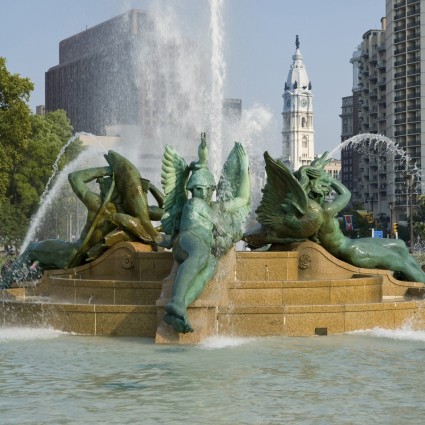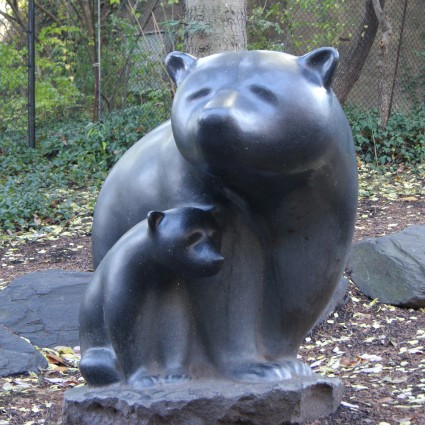Please note that zoo admission (fee) is required to view this sculpture.
One of the most memorable sights in Africa are the impala antelopes. When threatened by danger they “explode” in flight, sometimes leaping fifteen feet in the air to escape. Mitchell’s fountain captures this sudden flight as a herd scatters with twelve of these life-size animals arching over ten jets of water in an oval-shaped pool. The skeletal forms are characteristic of the impala’s lightness and agility, and they are executed in three graceful arcs while a mother and her calf graze nearby, unaware of the alarm which has caused the rest of the heard to bolt. The animals in flight are joined together by mortise and tenon joints and brass pins – for example, the hoof of one animal is inserted into a hole in the back of another.
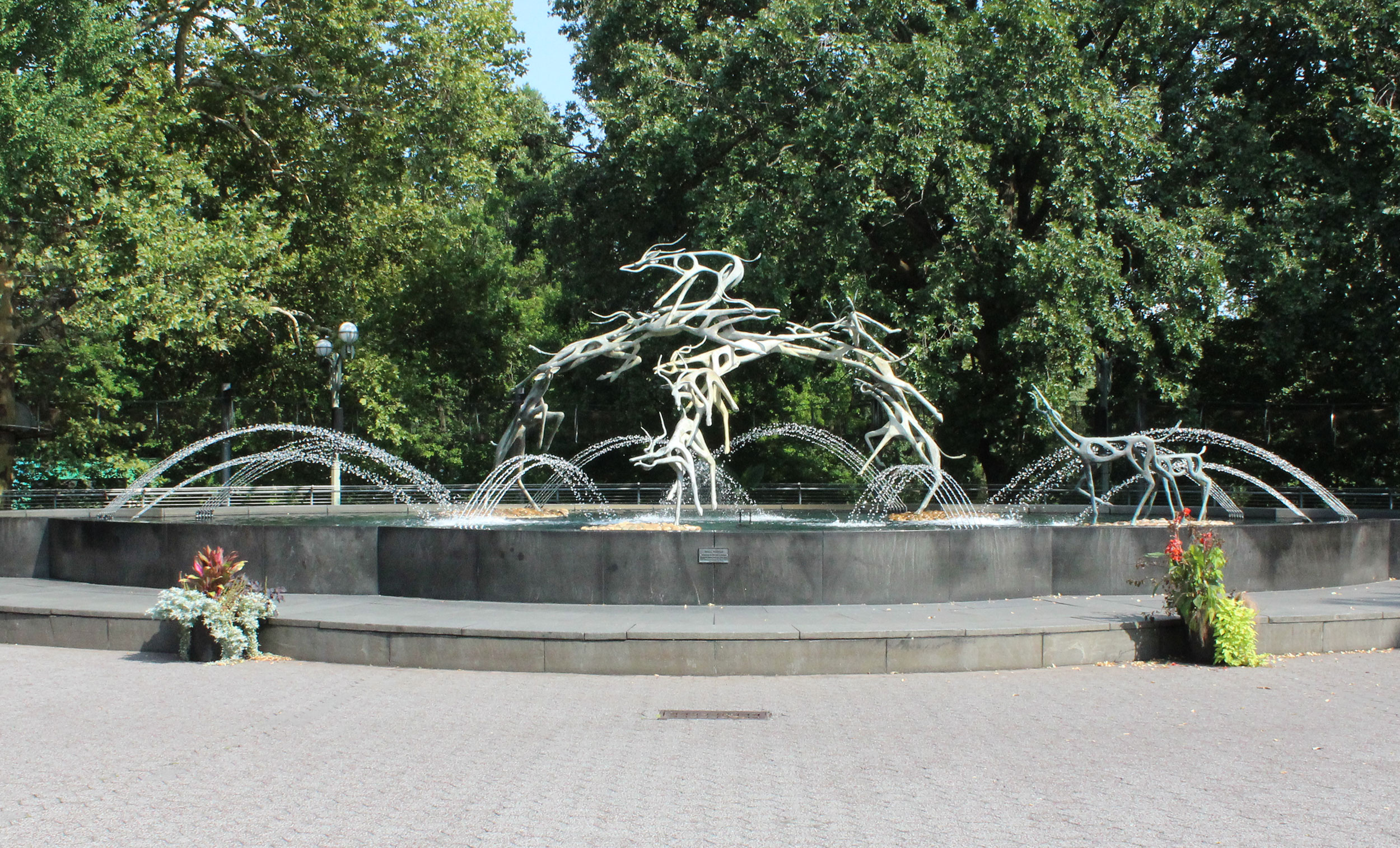
The fountain is dedicated to the memory of Herbert C. Morris, a former officer and director of the Zoological Society of Philadelphia. Most of the cost of the $140,000 project was donated by Mrs. Morris, with donations from supporters of the Zoo and the Fairmount Park Art Association (now the Association for Public Art). The black granite base pool and general setting was designed by the architectural firm of Hatfield, Martin and White, and the bronze animals were cast by Battaglia and Company in Milan.
Mitchell became one of Philadelphia’s best-known animal sculptors and Impala Fountain is considered the finest achievement of Mitchell’s career.
Although not a native of Philadelphia, artist Henry Mitchell studied locally at the Tyler School of Art (Temple University) and at the Accademia di Brera (Milan) as a Fulbright scholar. Mitchell became one of Philadelphia’s best-known animal sculptors and Impala Fountain is considered the finest achievement of Mitchell’s career. As the art critic Edward Sozanski remarked, Mitchell’s animals are “user-friendly”; many were designed as play sculptures, and all emphasize the joyful and gentle side of nature. Often, as in his impalas, Mitchell made extensive use of “negative space”– holes to indicate the animals’ recessive areas or fur patterns.
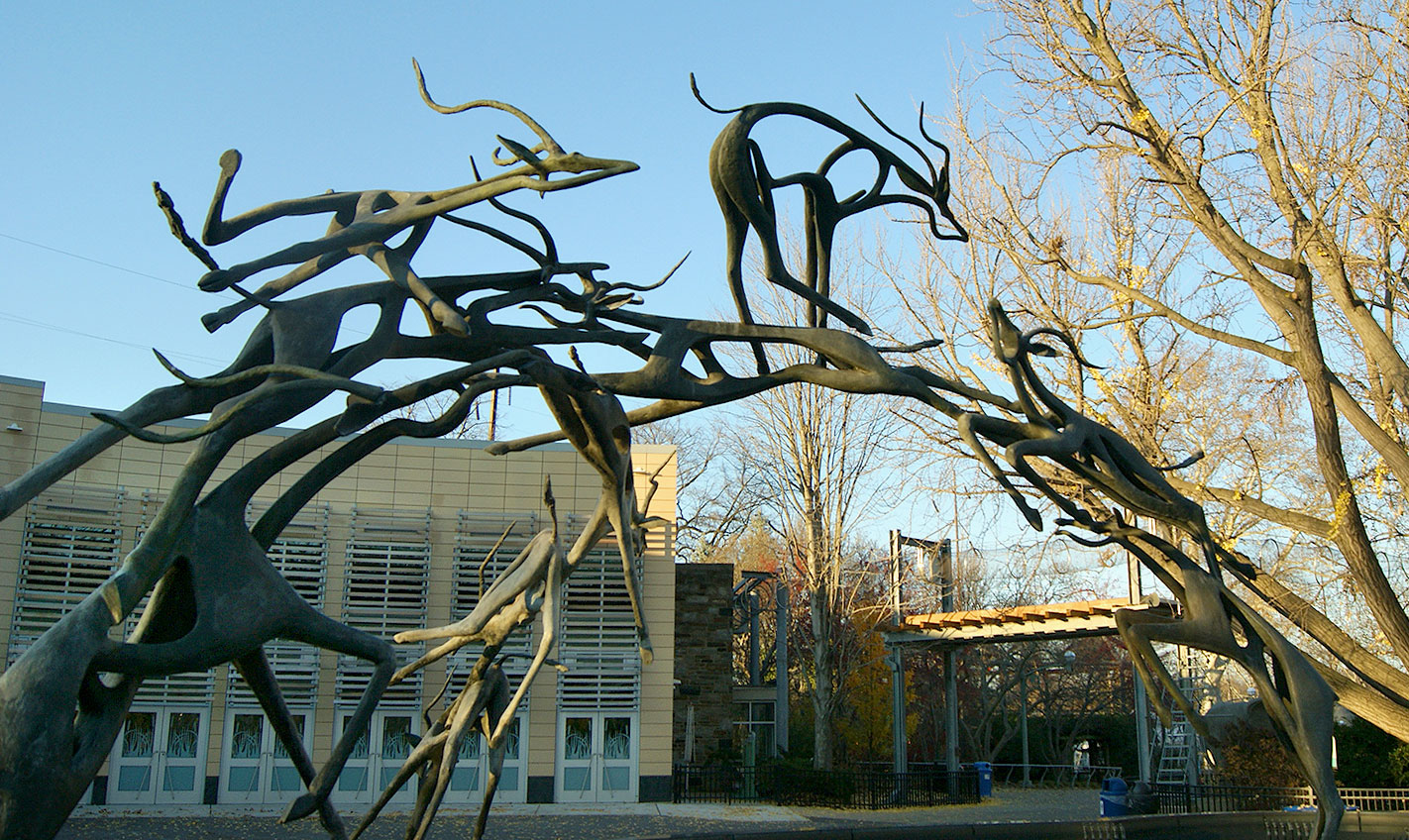
Also at the Zoo, is Mitchell’s Hippo Mother and Baby. Other works at outdoor sites around the city include Winged Ox and Column at Thomas Jefferson University; Running Free, a sculpture of three exuberant horses at Drexel University; and Courtship, Henry M. Phillips Memorial Fountain, in the East Terrace of the Art Museum.
Adapted from Public Art in Philadelphia by Penny Balkin Bach (Temple University Press, Philadelphia, 1992) and Sculpture of a City: Philadelphia’s Treasures in Bronze and Stone by the Fairmount Park Art Association (now the Association for Public Art) (Walker Publishing Co., New York, 1974).
RESOURCES
Enjoying this content?
Click here to donate and help us continue to tell the story of public art in Philadelphia.
